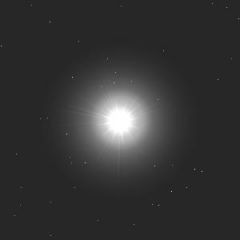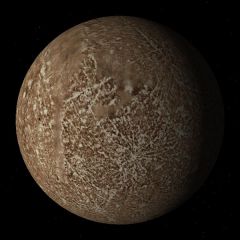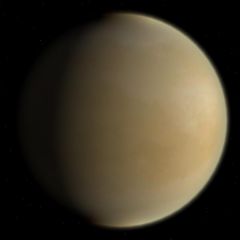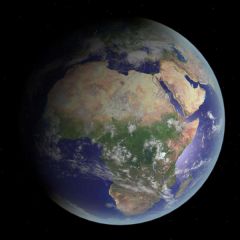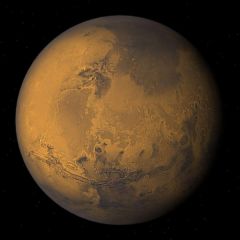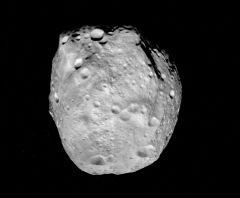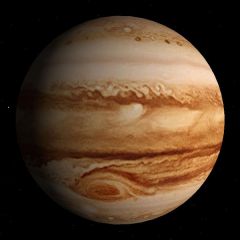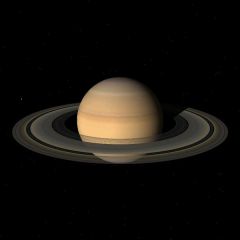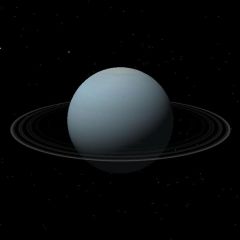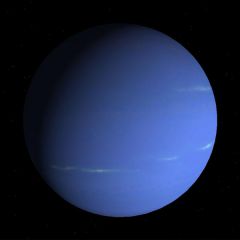Difference between revisions of "List of videos by 20 years: An Orbiter Documentary"
Jump to navigation
Jump to search
m |
(Tables.) |
||
| Line 195: | Line 195: | ||
|- | |- | ||
|width="30%"|Longitude of the ascending node (LAN)||align="right" width="30%"|48.33167° <br> (0.8435468 Radian) | |width="30%"|Longitude of the ascending node (LAN)||align="right" width="30%"|48.33167° <br> (0.8435468 Radian) | ||
| + | |- | ||
| + | |width="30%"|Longitude of periapsis||align="right" width="30%"|77.45645° <br> (1.169713 radian) | ||
| + | |- | ||
| + | |width="30%"|Mean longitude||align="right" width="30%"|252.25084° <br> (3.809383 radian) | ||
|- | |- | ||
|width="30%"|Apoapsis||align="right" width="50%"| | |width="30%"|Apoapsis||align="right" width="50%"| | ||
| Line 211: | Line 215: | ||
|- | |- | ||
|width="30%"|Time of periapsis||align="right" width="30%"| | |width="30%"|Time of periapsis||align="right" width="30%"| | ||
| − | |||
| − | |||
|- | |- | ||
|width="30%"|Precession Longitude of ascending node||align="right" width="30%"| | |width="30%"|Precession Longitude of ascending node||align="right" width="30%"| | ||
| Line 219: | Line 221: | ||
|- | |- | ||
|width="30%"|Precession period||align="right" width="30%"| | |width="30%"|Precession period||align="right" width="30%"| | ||
| − | |||
| − | |||
|- | |- | ||
!bgcolor="lightsteelblue" colspan="2"|Physical Characteristics* | !bgcolor="lightsteelblue" colspan="2"|Physical Characteristics* | ||
| Line 300: | Line 300: | ||
|- | |- | ||
|width="30%"|Longitude of the ascending node (LAN)||align="right" width="30%"|76.68069° <br> (1.157998 radian) | |width="30%"|Longitude of the ascending node (LAN)||align="right" width="30%"|76.68069° <br> (1.157998 radian) | ||
| + | |- | ||
| + | |width="30%"|Longitude of periapsis||align="right" width="30%"|131.53298° <br> (1.986354 radian) | ||
| + | |- | ||
| + | |width="30%"|Mean longitude||align="right" width="30%"|181.97973° <br> (2.748179 radian) | ||
|- | |- | ||
|width="30%"|Apoapsis||align="right" width="50%"| | |width="30%"|Apoapsis||align="right" width="50%"| | ||
| Line 316: | Line 320: | ||
|- | |- | ||
|width="30%"|Time of periapsis||align="right" width="30%"| | |width="30%"|Time of periapsis||align="right" width="30%"| | ||
| − | |||
| − | |||
|- | |- | ||
|width="30%"|Precession Longitude of ascending node||align="right" width="30%"| | |width="30%"|Precession Longitude of ascending node||align="right" width="30%"| | ||
| Line 324: | Line 326: | ||
|- | |- | ||
|width="30%"|Precession period||align="right" width="30%"| | |width="30%"|Precession period||align="right" width="30%"| | ||
| − | |||
| − | |||
|- | |- | ||
!bgcolor="lightsteelblue" colspan="2"|Physical Characteristics* | !bgcolor="lightsteelblue" colspan="2"|Physical Characteristics* | ||
| Line 405: | Line 405: | ||
|- | |- | ||
|width="30%"|Longitude of the ascending node (LAN)||align="right" width="30%"|-11.26064° <br> (-0.1700532 radian) | |width="30%"|Longitude of the ascending node (LAN)||align="right" width="30%"|-11.26064° <br> (-0.1700532 radian) | ||
| + | |- | ||
| + | |width="30%"|Longitude of periapsis||align="right" width="30%"|102.94719° <br> (1.554664 radian) | ||
| + | |- | ||
| + | |width="30%"|Mean longitude||align="right" width="30%"|100.46435° <br> (1.517169 radian) | ||
|- | |- | ||
|width="30%"|Apoapsis||align="right" width="50%"| | |width="30%"|Apoapsis||align="right" width="50%"| | ||
| Line 421: | Line 425: | ||
|- | |- | ||
|width="30%"|Time of periapsis||align="right" width="30%"| | |width="30%"|Time of periapsis||align="right" width="30%"| | ||
| − | |||
| − | |||
|- | |- | ||
|width="30%"|Precession Longitude of ascending node||align="right" width="30%"| | |width="30%"|Precession Longitude of ascending node||align="right" width="30%"| | ||
| Line 429: | Line 431: | ||
|- | |- | ||
|width="30%"|Precession period||align="right" width="30%"| | |width="30%"|Precession period||align="right" width="30%"| | ||
| − | |||
| − | |||
|- | |- | ||
!bgcolor="lightsteelblue" colspan="2"|Physical Characteristics* | !bgcolor="lightsteelblue" colspan="2"|Physical Characteristics* | ||
| Line 513: | Line 513: | ||
|- | |- | ||
|width="30%"|Longitude of the ascending node (LAN)||align="right" width="30%"|49.57854° <br> (0.7487136 radian) | |width="30%"|Longitude of the ascending node (LAN)||align="right" width="30%"|49.57854° <br> (0.7487136 radian) | ||
| + | |- | ||
| + | |width="30%"|Longitude of periapsis||align="right" width="30%"|336.04084° <br> (5.074743 radian) | ||
| + | |- | ||
| + | |width="30%"|Mean longitude||align="right" width="30%"|355.45332° <br> (5.367902 radian) | ||
|- | |- | ||
|width="30%"|Apoapsis||align="right" width="50%"| | |width="30%"|Apoapsis||align="right" width="50%"| | ||
| Line 529: | Line 533: | ||
|- | |- | ||
|width="30%"|Time of periapsis||align="right" width="30%"| | |width="30%"|Time of periapsis||align="right" width="30%"| | ||
| − | |||
| − | |||
|- | |- | ||
|width="30%"|Precession Longitude of ascending node||align="right" width="30%"| | |width="30%"|Precession Longitude of ascending node||align="right" width="30%"| | ||
| Line 537: | Line 539: | ||
|- | |- | ||
|width="30%"|Precession period||align="right" width="30%"| | |width="30%"|Precession period||align="right" width="30%"| | ||
| − | |||
| − | |||
|- | |- | ||
!bgcolor="lightsteelblue" colspan="2"|Physical Characteristics* | !bgcolor="lightsteelblue" colspan="2"|Physical Characteristics* | ||
| Line 624: | Line 624: | ||
|- | |- | ||
|width="30%"|Longitude of the ascending node (LAN)||align="right" width="30%"| | |width="30%"|Longitude of the ascending node (LAN)||align="right" width="30%"| | ||
| + | |- | ||
| + | |width="30%"|Longitude of periapsis||align="right" width="30%"| | ||
| + | |- | ||
| + | |width="30%"|Mean longitude||align="right" width="30%"| | ||
|- | |- | ||
|width="30%"|Apoapsis||align="right" width="50%"| | |width="30%"|Apoapsis||align="right" width="50%"| | ||
| Line 640: | Line 644: | ||
|- | |- | ||
|width="30%"|Time of periapsis||align="right" width="30%"| | |width="30%"|Time of periapsis||align="right" width="30%"| | ||
| − | |||
| − | |||
|- | |- | ||
|width="30%"|Precession Longitude of ascending node||align="right" width="30%"| | |width="30%"|Precession Longitude of ascending node||align="right" width="30%"| | ||
| Line 727: | Line 729: | ||
|- | |- | ||
|width="30%"|Longitude of the ascending node (LAN)||align="right" width="30%"|100.55615° <br> (1.518555 radian) | |width="30%"|Longitude of the ascending node (LAN)||align="right" width="30%"|100.55615° <br> (1.518555 radian) | ||
| + | |- | ||
| + | |||
| + | |width="30%"|Longitude of Periapsis||align="right" width="50%"|14.75385° <br> (0.222806 radian) | ||
| + | |- | ||
| + | |width="30%"|Mean Longitude||align="right" width="50%"|34.40438° <br> (0.519560 radian) | ||
|- | |- | ||
|width="30%"|Apoapsis||align="right" width="50%"| | |width="30%"|Apoapsis||align="right" width="50%"| | ||
| Line 844: | Line 851: | ||
|- | |- | ||
|width="30%"|Longitude of the ascending node (LAN)||align="right" width="30%"|113.71504° <br> (1.717275 radian) | |width="30%"|Longitude of the ascending node (LAN)||align="right" width="30%"|113.71504° <br> (1.717275 radian) | ||
| + | |- | ||
| + | |width="30%"|Longitude of Periapsis||align="right" width="50%"|92.43194° <br> (1.395867 radian) | ||
| + | |- | ||
| + | |width="30%"|Mean Longitude||align="right" width="50%"|19.94432° (0.754237 radian) | ||
|- | |- | ||
|width="30%"|Apoapsis||align="right" width="50%"| | |width="30%"|Apoapsis||align="right" width="50%"| | ||
| Line 973: | Line 984: | ||
|- | |- | ||
|width="30%"|Longitude of the ascending node (LAN)||align="right" width="30%"|74.22988° <br> (1.1209874 radian) | |width="30%"|Longitude of the ascending node (LAN)||align="right" width="30%"|74.22988° <br> (1.1209874 radian) | ||
| + | |- | ||
| + | |width="30%"|Longitude of Periapsis||align="right" width="50%"|170.96424° <br> (2.581828 radian) | ||
| + | |- | ||
| + | |width="30%"|Mean Longitude||align="right" width="50%"|313.23218° <br> (4.730296 radian) | ||
|- | |- | ||
|width="30%"|Apoapsis||align="right" width="50%"| | |width="30%"|Apoapsis||align="right" width="50%"| | ||
| Line 1,093: | Line 1,108: | ||
|- | |- | ||
|width="30%"|Longitude of the ascending node (LAN)||align="right" width="30%"|131.72169° <br> (1.9892037 radian) | |width="30%"|Longitude of the ascending node (LAN)||align="right" width="30%"|131.72169° <br> (1.9892037 radian) | ||
| + | |- | ||
| + | |width="30%"|Longitude of Periapsis||align="right" width="50%"|44.97135° <br> (0.679138 radian) | ||
| + | |- | ||
| + | |width="30%"|Mean Longitude||align="right" width="50%"| | ||
|- | |- | ||
|width="30%"|Apoapsis||align="right" width="50%"| | |width="30%"|Apoapsis||align="right" width="50%"| | ||
| Line 1,207: | Line 1,226: | ||
|- | |- | ||
|width="30%"|Longitude of the ascending node (LAN)||align="right" width="30%"|110.30347° <br> (1.6657551 radian) | |width="30%"|Longitude of the ascending node (LAN)||align="right" width="30%"|110.30347° <br> (1.6657551 radian) | ||
| + | |- | ||
| + | |width="30%"|Longitude of periapsis||align="right" width="30%"|224.06676° (3.383759 radian) | ||
| + | |- | ||
| + | |width="30%"|Mean longitude||align="right" width="30%"|238.92881° <br> (3.608199 radian) | ||
|- | |- | ||
|width="30%"|Apoapsis||align="right" width="50%"| | |width="30%"|Apoapsis||align="right" width="50%"| | ||
| Line 1,223: | Line 1,246: | ||
|- | |- | ||
|width="30%"|Time of periapsis||align="right" width="30%"| | |width="30%"|Time of periapsis||align="right" width="30%"| | ||
| − | |||
| − | |||
|- | |- | ||
|width="30%"|Precession Longitude of ascending node||align="right" width="30%"| | |width="30%"|Precession Longitude of ascending node||align="right" width="30%"| | ||
| Line 1,231: | Line 1,252: | ||
|- | |- | ||
|width="30%"|Precession period||align="right" width="30%"| | |width="30%"|Precession period||align="right" width="30%"| | ||
| − | |||
| − | |||
|- | |- | ||
!bgcolor="lightsteelblue" colspan="2"|Physical Characteristics* | !bgcolor="lightsteelblue" colspan="2"|Physical Characteristics* | ||
Revision as of 11:58, 22 August 2021
Template
| Template | |
|---|---|
| [[Image:|240px]] | |
| Template in Orbiter | |
| Designation | |
| Name | Template |
| Reference body | Sun |
| Number of satellites | 0 |
| Orbital Characteristics* | |
| Epoch | J2000 (1 January 2000) |
| Semimajor axis | |
| Apoapsis | |
| Periapsis | |
| Eccentricity | |
| Inclination | |
| Longitude of the ascending node (LAN) | |
| Orbital period | |
| Synodic period | N/A |
| Average orbital speed | |
| Mean anomaly | |
| Mean motion | |
| Time of periapsis | |
| Argument of periapsis | |
| Precession Longitude of ascending node | |
| Precession obliquity | |
| Precession period | |
| Physical Characteristics* | |
| Mean radius | |
| Equatorial radius | |
| Polar radius | |
| Flattening | |
| Surface area | |
| Volume | |
| Mass | |
| Mean density | |
| Surface gravity | |
| Escape velocity | |
| Rotation period | |
| Sidereal rotation period | |
| Equatorial rotation velocity | |
| Axial tilt (obliquity) | |
| Right ascension north pole | |
| Declination north pole | |
| Atmosphere* | |
| Atmosphere model | |
| Surface Pressure | |
| Surface Density | |
| Specific gas constant | |
| Specific heat ratio | |
| Ecliptic position from primary* | |
| Note | *Elements given are from Orbiter 2016 |
Sun
Mercury
Venus
Earth
Moon
Mars
Phobos
Deimos
Vesta
Jupiter
Io
Europa
Ganymede
Callisto
Saturn
Mimas
Enceladus
Tethys
Dione
Rhea
Titan
Hyperion
Iapetus
Uranus
Miranda
Ariel
Umbriel
Titania
Oberon
Neptune
Proteus
Triton
Nereid
Pluto
| Pluto | |
|---|---|
| 240px | |
| Pluto in Orbiter | |
| Designation | |
| Name | Pluto |
| Reference body | Sun |
| Number of known satellites | 5 |
| Orbital Characteristics* | |
| Epoch | J2000 (1 January 2000) |
| Semimajor axis | 39.48168677 AU (5.90637627×1012 km) |
| Eccentricity | 0.24880766 |
| Inclination | 17.14175° (0.299180 radian) |
| Longitude of the ascending node (LAN) | 110.30347° (1.6657551 radian) |
| Longitude of periapsis | 224.06676° (3.383759 radian) |
| Mean longitude | 238.92881° (3.608199 radian) |
| Apoapsis | |
| Periapsis | |
| Orbital period | |
| Synodic period | N/A |
| Average orbital speed | |
| Mean anomaly | |
| Mean motion | |
| Time of periapsis | |
| Precession Longitude of ascending node | |
| Precession obliquity | |
| Precession period | |
| Physical Characteristics* | |
| Mean radius | |
| Equatorial radius | |
| Polar radius | |
| Flattening | |
| Surface area | |
| Volume | |
| Mass | |
| Mean density | |
| Surface gravity | |
| Escape velocity | |
| Rotation period | |
| Sidereal rotation period | |
| Equatorial rotation velocity | |
| Axial tilt (obliquity) | |
| Right ascension north pole | |
| Declination north pole | |
| Atmosphere* | |
| Atmosphere model | J71G |
| Surface Pressure | 101.3 KPa |
| Surface Density | 1.225 kg/m3 |
| Specific gas constant | 286.91 J/(K kg) |
| Specific heat ratio | 1.40 |
| Ecliptic position from primary* | |
| Note | *Elements given are from Orbiter 2016 |
